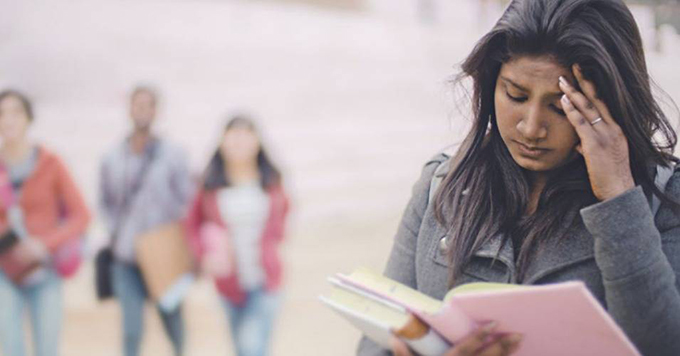
According to the National Observatory of Student Life ( OVE ), more than eight out of 10 students report having been in a precarious situation at least during the year. This value is stable over the last surveys on living conditions , conducted in 2010, 2013 and 2016.
This very high value is to be qualified in that it covers quite different situations. The level of economic insecurity is not of the same nature when we say “to be restricted”, “to have an overdraft at the bank”, or “to have made an emergency aid request during”.
On the other hand, it is estimated that about 17% of students feel very precarious. These are those who feel that their resources are inadequate and that they are facing significant and very significant financial difficulties. It is to these students in a situation of strong feelings of precariousness that we will be interested.
Age criterion
The importance of the feeling of precariousness among students is in many ways part of a life trajectory. The various works of sociology demonstrate first of all that this feeling emanates largely from a comparison with an earlier situation.
Thus, students from favored social groups may have a strong feeling of precariousness if their situation deteriorates. Conversely, students in an objective precarious situation may not bear witness to this feeling when their situation improves, even if it remains precarious.
On the other hand, the feeling of precariousness increases with advancement into adulthood – note that we measure entry into adulthood by age, relationship, fatherhood, departure parental home and entry into the labor market.
Compared to students under the age of 20, students aged 20 to 22 are 1.5 times more likely to have a strong feeling of insecurity. This rate is 2.5 times higher for those aged 25 and over.
Personal status
The feeling of high precariousness also increases with residential autonomy. Students who have left home and are self-employed are 1.3 times more likely to feel this way than those who continue to live with their parents.
This situation is part of a housing crisis in the territories. The financial cost of access to independent housing, the ability to mobilize financial assistance from the family and public assistance will play a socially differentiated role on residential autonomy and the strengthening of the feeling of precariousness.
In the same order of magnitude, this is also the case for students who have a stable romantic relationship compared to those who are not in a relationship. It is likely that this stronger feeling of precariousness is linked to the feeling of responsibility towards the partner or companion, but also, if necessary, towards the children.
A closer observation shows that, as for the population as a whole, for students with a stable relationship, having children reinforces the feeling of insecurity when one does not live with one’s spouse, and decreases it when we live with his spouse.
Family support
It is very difficult to measure family support, as it is very diverse in nature, between cash payments, indirect financial support or informal material assistance – purchase of equipment, donation of furniture, meals, etc.
In any case, its symbolic importance is beyond doubt. Thus, students who benefit from full family help more frequently have a strong feeling of precariousness than those who benefit from partial help. It is likely that this is largely due to the resulting financial dependence on parents.
For those who do not receive any financial aid from their families (students from the working and middle classes for the most part), the feeling of economic insecurity may be linked to this impossibility of mobilizing aid, the symbolism of which is important.
strategies
Having a paid activity also plays a role on feelings of precariousness. Thus, students who have a paid activity competing with studies experience 1.5 times more often a strong feeling of precariousness than those who do not have a student job.
These students in a situation of great economic fragility, with a strong feeling of their precariousness form a rather heterogeneous group that stands out in the way of coping with this situation.
Here again, the behaviors are differentiated according to the advancement in adulthood. Thus, the older students will accept the constraint of work (very) competing studies, while the youngest will agree to restrict themselves to diet and exits or give up for example medical care.
Author Bio: Philippe Cordazzo is a Professor of demography, assistant director of the SAGE laboratory at the University of Strasbourg
